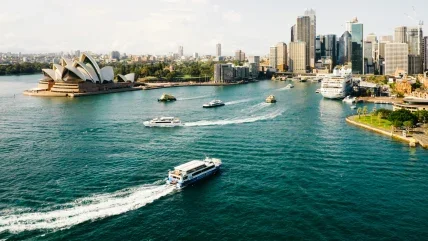
Tunnel workers building Sydney’s Metros have been exposed to toxic silica dust levels far exceeding those working in the engineered stone industry, the Australian Workers Union (AWU) says.
The organisation says Transport for NSW (TfNSW) documents it obtained through freedom of information laws show tunnellers are exposed to cancer-causing dust while building government projects like Metro West, and Metro City & Southwest.
One in three air quality tests during construction of Metro City & Southwest exceeded the Workplace Exposure Standard (WES), some by 208 times, according to the documents.
Air quality reports at the three Metro West sites currently being bored show that toxic silica dust levels have exceeded the WES one in seven times. The WES is 0.05 milligrams per cubic metre.
The data also shows tunnelling using roadheaders exposes workers to silica dust levels far greater than engineered stone kitchen benchtops, which were banned after an AWU campaign. The national ban on engineered stone came in on July 1. It prohibits the manufacture, supply, processing and installation of engineered stone benchtops, panels and slabs containing at least 1% silica.
Only a small amount of tunnelling is being undertaken with roadheaders on Sydney Metro but projects such as NorthConnex, WestConnex, and M6 stage 1 have used roadheaders consistently, and Western Harbour Tunnel is using a combination of roadheaders and TBM.
The AWU says air monitoring reports from these projects, which is held by Safe Work NSW rather than TfNSW, have been withheld from the public and kept secret.
Safe Work NSW refused to release the data, citing concerns over potential negative reputational impact on companies including CPB Contractors Pty Ltd (CPB) and John Holland.
In a letter to the AWU, Safe Work NSW said:
“Release of the reports will… adversely impact upon the reputation of CPB… because it is reasonable to expect that the reports will lead to adverse media coverage in respect of the management of health risks, including the risks presented by respirable dust and RCS (respirable crystalline silica).”
Last week, following the AWU’s representations, NSW Legislative Council member Mark Banasiak used his powers under standing order 52 to obtain this information. Standing order 52 allows NSW Legislative Council members to obtain information held by a department.
The information from Safe Work NSW, and additional information from Sydney Metro and Transport for NSW (TfNSW) will be delivered to Banasiak on December 18.
On September 1 new national laws took effect which give workers the right to demand multiple safety control measures such as PPE, water suppression, on-tool extraction systems and local exhaust ventilation systems.
Workers can also demand a silica risk control plan from the employer in a high-risk environment.
The Hawkesbury Sandstone under Sydney is around 85% silica content and can be cut using roadheaders. Granite and basalt have much less silica.
AWU assistant national secretary said civil engineering companies needed to come clean about the health impacts of tunnelling on their workers.
“No Australian in 2024 should be poisoned by toxic dust at work, not with the technology we have today,” he said.
“Sydneysiders would be ropable if they knew the new metro they were sitting on, or underground motorway they were driving through came at the expense of someone’s health.
“We need to find out what’s happened underground in these projects right now so we can stop it happening in the future.”
In a press release on its website, WorkSafe NSW says the government has issued more than 100 improvement notices to enforce the ban on engineered stone.
The NSW government is funding a new team of dedicated inspectors. Established since September, the A$2.5m investment will see specialised silica inspectors issue prohibition notices to stop work that generates high levels of silica dust. Businesses can face penalties up to A$40,000 for noncompliance.
In the first two months of inspections, the new SafeWork NSW’s Silica Compliance Team conducted 118 inspections, issuing 125 improvement notices and seven prohibition notices in workplaces.
This includes a blitz in south-west Sydney late October where the team conducted over 36 inspections, issuing 47 improvement notices and five prohibition notices. Inspectors focused on dry cutting, appropriate use of respiratory protective equipment, and health monitoring.







